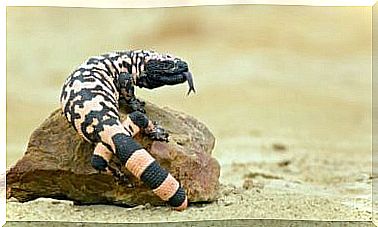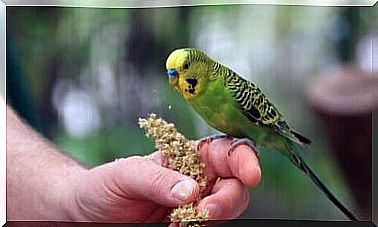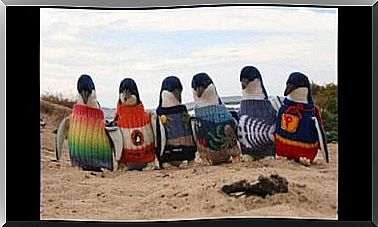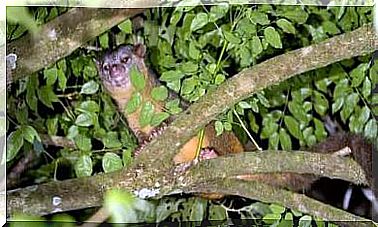Poison Dart Frog: Beautiful But Deadly
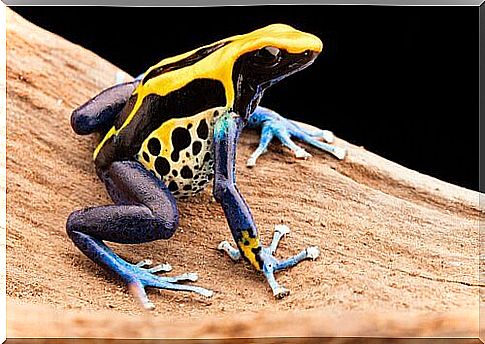
The poison dart frog or Dendrobates is probably one of the most beautiful amphibians in the world. But its bright and captivating colors are an indication of a very high toxicity. This is aposematism, a characteristic typical of many living beings and one of the characteristics of what many consider the most poisonous animal on Earth.
Characteristics of the poison dart frog
The poison dart frog family actually consists of nearly 200 different species. Because they are close relatives, all of these amphibians have a great many features in common.
The size of the poison dart frog varies depending on the species and age of each, but it is quite a small amphibian compared to others. A specimen can range from half a centimeter in length up to three and a half centimeters.
Everyone has diurnal habits, that is, they concentrate their activity during the day and spend the night resting or hiding. Thanks to their very high toxicity they have no predators, so they do not have to camouflage themselves during the night, like many other animals.
The most striking aspect of these animals is their colors. The poison dart frog’s appearance is due to a survival strategy used by other animals (the aforementioned aposematism ). With its bright colors it warns any predators of the lethal danger they would face. This is not a bluff . In fact, the the venom is powerful enough to kill ten people.
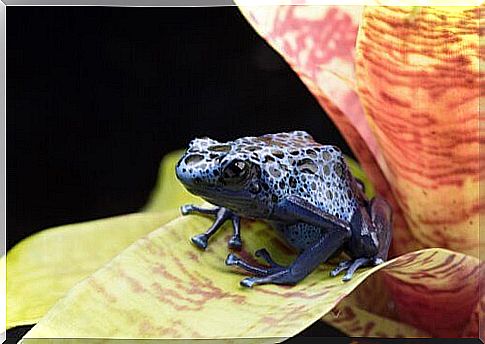
Several studies have shown that the amount of poison is directly proportional to the variety of colors that the skin of this frog has. Put simply: the more colorful it is, the more lethal it is. The most poisonous species is the golden frog ( Phyllobates terribilis ), but there is a wide variety of colors with which the poison dart frog can be found: yellow, blue, red and brown. They can be simple shades, or even have several darker colored and even striped spots.
The feeding of the poison dart frog
These amphibians generally feed on small arthropods. That is, ants, beetles, termites, mites. The specific diet depends on the frog species. The larger amphibians will eat the larger insects, while the smaller ones will have to make do with mites and ants.
They derive their poison from their diet, since poison dart frogs are unable to synthesize it on their own. Through the arthropods they eat, they store the toxins present in them and store them in the skin. Since these toxins do not affect them, they become poisonous only to other animals.
If a poison dart frog is kept in captivity and follows a diet provided by humans, it stops feeding on arthropods that trigger toxin buildup. In a few weeks it will no longer be poisonous, while feeding well and enjoying excellent health.
The habitat of the poison dart frog
The poison dart frog family is found only in Central and South America. Their habitat ranges from Nicaragua to Bolivia and can appear on some Caribbean island. In addition, they were artificially introduced to Hawaii. There is a greater variety of species in the areas of Panama, Costa Rica, the Colombian Andes and the Andean areas of Peru and Ecuador.
These frogs can be found in very different ecosystems. They prefer areas with a lot of vegetation and a lot of humidity. In addition, temperatures must be high and constant throughout the year. For this reason, they live in rainforests, tropical jungles and Andean forests. They can be found 3,000 meters above sea level.
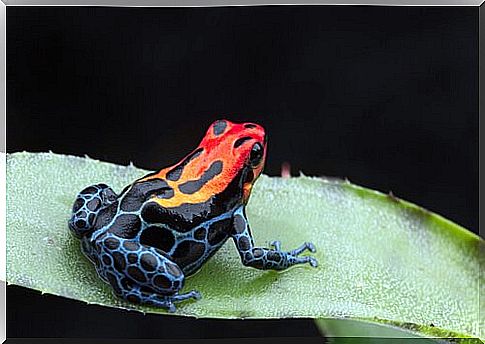
Its name comes from the fact that Native American tribes used its poison for the tip of their arrows. We currently know that only four poison dart frog species were used to kill enemies and invaders. In fact, the natives prefer to use poisonous plants for their weapons.
The most poisonous animal in the world
Due to the fact that it is an extremely dangerous species, obviously, the studies carried out are very rare and today it is not clear whether it is an endangered species. However, it is known that they have recently lost large areas of their ecosystems and suffered various deadly epidemics.
The poaching is giving a serious blow to their survival, since the black market of these amphibians is very profitable. There is no real data on how many frogs in this family live freely, but some species have long been placed on the IUCN ( International Union for Conservation of Nature ) red list and action will need to be taken before it is too late.
The poison dart frog is an animal that possesses the most incredible colors in nature. In order to survive, however, he had to develop an extreme defensive strategy, which makes this fascinating living being unapproachable. They are endemic to the humid ecosystems of Central and South America, which are difficult to find in the wild, but if you travel to those areas and notice a very conspicuous-looking frog, keep a safe distance.
